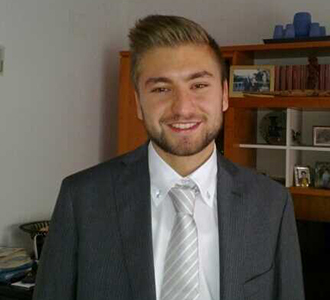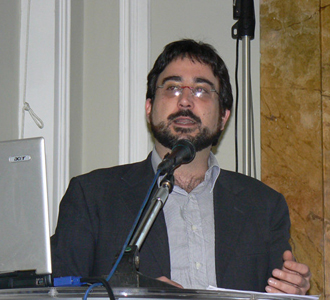Fondazione
Organisation Profile
Fondazione Ugo Bordoni is a higher education and research institution, under the supervision of the Ministry of Economic Development, as defined by Law 3/2003.
Established in 1952 within the Ministry of Posts and Telecommunications, Fondazione Bordoni has a long-standing tradition of research and applications in telecommunications sector. Through fruitful exchange between basic and applied research FUB has been able to police technological landscape developments well in advance, combining studies in the field of ICT with the design and implementation of innovative services for government bodies, and with the identification of countrywide system policies in the field.
The Law 69/2009 guarantees its impartiality as trusted third party, and recognises its scientific autonomy, thus eligible to consulting and support of Government bodies and Independent Authorities, to elaborate and to propose development strategies for communications sector.
In house company of Government Authorities
The 2019 Statute establishes the “Government Authorities Committee”, which guarantees to all Government Bodies taking part in it to exercise similar control over the FUB pursuant to Art. 5 of d.lgs.50/2016, thus allowing procurement to FUB through in-house providing. As in house company bridging across all Public and Government Bodies, Fondazione Bordoni represents a unique situation in italian ICT landscape.

History
Established in 1952 as foundation within the Ministry of Post and Telecommunications (D.P.R. 2472/1952), FUB carries out scientific research in the telecommunications, electronics, informatics and postal sectors.
Combining both impartiality of the public mission and private management, and offering high level training in the field of telecommunications, FUB becomes an outstanding player in the frontier research of signal processing and transmission. In 1968, with new premises in Bologna, FUB launches new joint activities of applied research addressed to manufacturing industries and regulatory authorities.
Since 2000, FUB also carries out consultancy on TLC to public administration and Independent Authorities as trusted third party, becoming a key actor for important technological innovation processes, such as the evolution of mobile networks (3G, 4G-LTE, 5G) and the transition to digital terrestrial TV.
Nowadays, FUB is a not for profit, public-law body and its expertise and competences are based on a 40 years of research experience free of economic pressures.
Ugo Bordoni

Ugo Bordoni was born in Rome in 1884.
At 22 he graduated in Engineering at the University of Rome, and in 1923 he was Professor of Technical Physics, focusing on the study of thermotechnics, thermodynamics and acoustics.
In the early 30s, he devoted himself to the development of the telephone industry. Upon the establishment of the STET (Società Finanziaria Telefonica) Company, he was appointed President and retained this position until his death in 1952.
In his honour, the Ministry of Posts and Telecommunications named after him the new foundation (Fondazione) for scientific research in the field of telecommunications (D.P.R. 2472/1952).
Leggi tutto
Mission
Fondazione Ugo Bordoni provides government bodies and Independent Authorities with technological tools and scientific and technological know-how in order to foster progress and technical innovation, and to promote dissemination of digital culture.
FUB carries out it’s activities with independence as trusted third party aiming at maximising the benefits of innovation for the development and modernisation of the Country, for the protection and empowerment of citizenship, and for institution-building.
FUB produces innovative projects to the interest of the Government, of Government Bodies, of scientific community, and of citizens.
In particular, Fondazione Bordoni pursues the following objectives:
- Promote technological innovation for the development and modernisation of the Country;
- Transfer know-how for the digitisation of public administrations
- Supply scientific and technical support to institutions and enterprises;
- Cultivate innovation research at an international level;
- Foresee scenarios and supply tools for the protection of citizenship;
- Serve as a reference point to administrations, academia and industry.
Leggi tutto
Governance
Fondazione Ugo Bordoni’s governance is made up of five bodies: Government Authorities Committee, Board of Directors, President, Board of Auditors, Scientific Committee. It is possible to read on the Statute all details about composition, duration of the mandate, roles and tasks.
The Board of Directors is made up of three members (the President is the legal representative), appointed respectively by the Minister for Economic Development, the Prime Minister, the Ministry of Economic Development according to the recommendation of the President of the Communication Authority (AGCOM).
Government Authorities Committee
-
To be appointed
Board of Directors
-
President
-
Members
Loredana Ficarelli
Giorgio Ventre
Board of Auditors
-
President
Massimiliano Ghizzi
-
Auditors
Luigi La Rosa
Mauro Ceriani
Scientific Committee
Designato il 20 aprile 2018
-
President
Prof. Maurizio Dècina
Emeritus Professor of Politecnico di Milano
-
Members
Prof. Francesco Cardarelli
Studio Lattanzi Cardarelli Avvocati
Prof.ssa Giovanna De Minico
Dipartimento Diritto Costituzionale – Università degli Studi di Napoli Federico II
Prof. Tommaso Di Noia
Dipartimento di ingegneria Elettrica e dell’Informazione Politecnico di Bari
Prof. Michele Polo
Dipartimento di Economia – Università Bocconi
Ing. Vittorio Trecordi
DEI Dipartimento Elettronica e Informazione Politecnico di Milano
Ing. Valerio Zingarelli
President Telecommunications Studies and Consulting
Advisor Sindaco di Venezia per le Smart Cities
General Affairs and Compliance Directorate
-
Director
Administrative Directorate
-
Director
Organization and Strategic Planning Directorate
-
Director
Scientific Directorate
-
Director
Strategies
The 3-year Strategic Guidelines set the priorities for planning development and innovation in line with the Mission and Statute.
The guidelines provide directions towards actual and future research activities, and to consolidate scientific and technological capacity, as well as to raise public awareness and debate in cooperation with academic, institutional and industry levels.








